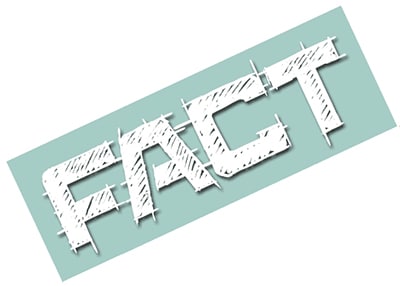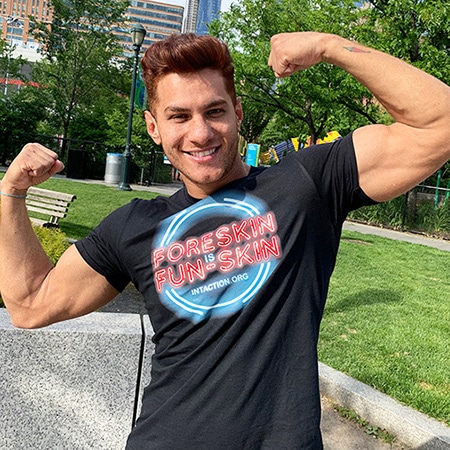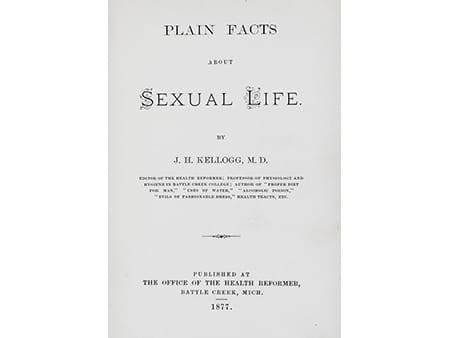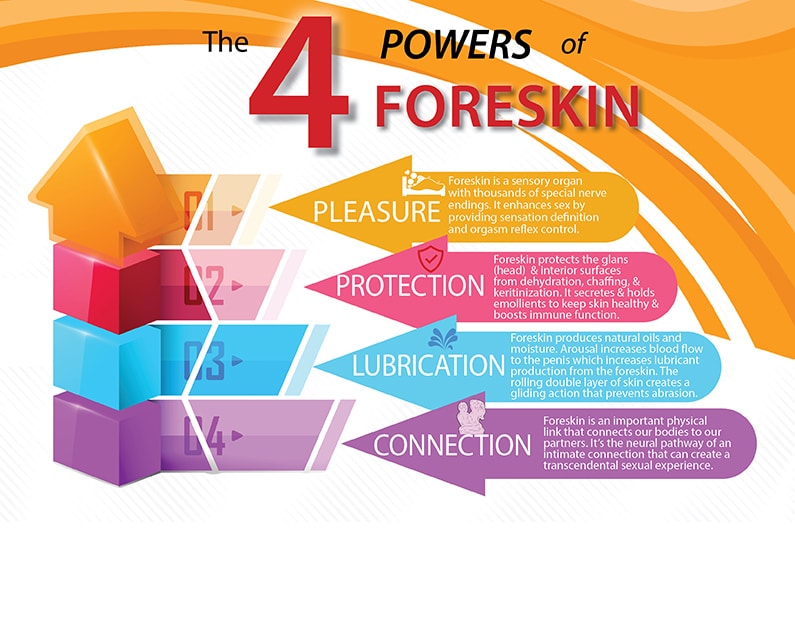
Circumcision Facts and Myths | Information Guide | Intaction
by Lauren Vinophall
Freelance Research Writer
August 7, 2020 (updated)
People are always amazed to learn about circumcision facts and myths. Are there real benefits to consider when making the circumcision decision, or is it just an illusion? As hard as circumcision promoters try to make the practice of genital cutting to be the “norm”, you may be surprised to learn that much of what many Americans think of as “fact” is actually just cultural “groupthink.” While some beliefs are rooted in ancient religious practices, most of what American’s believe is the “norm” has only existed in recent times when it comes to circumcision. In fact, you would be amazed at how many things you think are true that are simply false. Something important to consider when you review circumcision facts and myths.

Myth #1: Everyone Circumcises
Living in America in the beginning of the 21st century, it’s easy to see how this notion got ingrained in the cultural consciousness: it’s common , and it’s common, so it must be common everywhere, always. Right? Wrong!
Most of the world doesn’t practice circumcision. In fact, most of the world has never practiced circumcision. The truth is that the United States is the only country that circumcises the majority of babies, and we’ve only done it for a few generations. And on top of that, we’re doing it less and less: fewer than 60% of male babies in the US are circumcised these days.
Myth #2: The Foreskin is Just a Bit of Skin
This is a big myth about circumcision that proponents cite to make circumcision seem trivial. The foreskin is not an extra bit skin–that is not correct. First, it’s not “extra”, in fact it’s a highly complex piece of tissue that includes mucus membranes, muscle fibers, and erogenous nerve endings. It’s an essential part of the penis, not something extra. And second, it’s not a “bit”. It’s as much as 15 square inches (when unfolded) in an adult of amazing specialized skin.
Myth #3: Circumcision is Safe and Harmless
The reality is that claiming circumcision is safe is a dubious claim. To say it’s harmless is just flat wrong. Removing the foreskin can have many complications, such as life threatening bleeding, infection, meatal stenosis, disfigurement, excessive scaring, and severe skin bridge adhesions. Some circumcised boys need more than one surgery to attempt to fix these manmade problems. As bad as that sounds, things can get worse. Studies have reported that 117 babies die every year from circumcision or complications arising from it. [Bollinger, Thymos: Journal of Boyhood Studies 2010 ]. Additionally the traumatic stress from circumcision impacts the baby’s developing brain, inflicting psychological trauma. The strong pain signals impact the newly forming neural connections in the brain. Babies enduring this pain also suffer from PTSD.
Physically circumcision destroys the functions that the foreskin performs during sex–it is one of the most touch-sensitive parts of the penis, and removing it drastically changes the dynamics of sex.
People claiming that circumcision is safe and harmless is just an illusion for them to defend the decision they have likely made.
Myth #4: Circumcision is Medically Beneficial
The American Academy of Pediatrics doesn’t recommend routine circumcision of all newborns (though they do say that it’s medically necessary in some specific instances). When sorting through circumcision facts and myths, realize circumcision is not guaranteed to prevent any disease. Behavior and hygiene are always more important to health than circumcision. This American doctor group do not recommend circumcision, and all international medical societies do not recommend circumcision.
Myth #5: Babies Can’t Feel or Remember Pain
Circumcision is extremely painful to the baby. This is definitely a disadvantage of circumcision. A study in Canada in 1997 set out to determine what anesthesia worked best in the prevention of pain, but the study was stopped midway through because they felt that the babies who were receiving no anesthesia (the control group) were in so much pain that it was unethical for the study to continue. Even in the United States where circumcision is most common, only 45% of doctors use anesthesia at all. There is no mandatory anesthesia or pain relief policy enforced in hospitals for this procedure. This is an important item to consider when discussing circumcision facts and myths.

Fact #1: The Only Person Making Such an Important Decision Should Be the Boy
Before we wade into the debate about circumcision facts and myths, consider this. Ask yourself if it’s ethical to force someone to surgically modify their body. Can you force another person to get a tattoo, a body piercing, or cosmetic surgery? Few reasonable people would vote yes to that. So when it comes to circumcision , there can be only one ethical choice. Parents really ought to leave that decision to the boy to decide, when he becomes an adult. After all, it’s his body being changed by circumcision and it will affect him later in life. It’s his life, and he should be the one allowed to make that decision.
Parents like to think they are “saving” their son from having to do it later. They are not.
FACT #2: Circumcision started in America to “save” boys from masturbating
That’s right. This fact is extensively documented in the historical literature. The idea started in the 1890’s that masturbation was a dirty vile habit that needed to be stopped. Medical experts from across America began promoting circumcision to parents as a way to prevent masturbation. The “experts” led parents to believe that masturbation would cause mental insanity and was also the root cause of many diseases.
Notable people of the day like John Harvey Kellogg wrote in his book, “Plain Facts for Young and Old,” about curing masturbation, “A remedy which is almost always successful in small boys is circumcision, the operation should be performed by a surgeon without administering an anesthetic, as the brief pain attending the operation will have a salutary effect upon the mind, especially if it be connected with the idea of punishment.” Read more about the History of Circumcision in America.
Fact #3: Many International Medical Societies Don’t Recommend Circumcision
Let’s hear from some experts on these circumcision facts and myths.
The Canadian Paediatric Society stated, “medical necessity is not established, …interventions should be deferred until the individual concerned is able to make their own choices.”
The Royal Dutch Medical Association said “there is no convincing evidence that circumcision is useful or necessary in terms of prevention or hygiene.”
The Royal Australasian College of Physicians said that it is ethically questionable whether parents ought to be able to make such a decision for a child.
The British Medical Association said it is “unethical and inappropriate” to circumcise for therapeutic reasons when effective and less invasive alternatives exist.
The German Association of Pediatricians said “there is no reason from a medical point of view to remove an intact foreskin from …boys unable to give their consent.”
In addition, organizations from Belgium, Finland, Norway, Slovenia, South Africa, Denmark, and Sweden have all come out in opposition to non-therapeutic circumcision. All of these doctors, when it comes to the natural foreskin, say don’t cut it off.
Fact #4: Circumcision is a billion dollar business
When it comes to circumcision facts and myths, this is a fact. Hospitals and doctors earn income by performing circumcisions. Since performing the procedure is part of their livelihood, the medical community tends to be biased in favor of circumcision. Hospitals also get paid a facility fee for each circumcision. The average amount invoiced to insurance carriers can be as much as $1500 per circumcision. Some hospitals bundle circumcision costs into the overall price for a delivery. Reducing circumcisions may prompt insurance carriers to lower the reimbursement rate. Since circumcision has a 11% complication rate, these botches and complications (called revision surgery) must be repaired by pediatric urologists for even more money.
Under current law, hospitals are automatically given ownership of harvested infant foreskin tissue. Neonatal tissue has unique stem cells and growth factors which are valuable. Some hospitals may sell infant foreskin tissue to bio-tech and cosmetic companies for further profit. Other hospitals may use the free infant foreskin tissue in their revenue generating clinical trials. Hospitals and these companies have no obligation to share any of the profits with you.
The reality is in an era of reduced insurance payments to hospitals, there is more pressure than ever to increase revenues.

Fact #5: Over 75% of Men Around The World Are Intact [uncircumcised] (and love it!)
Throughout most of the world, being intact (or uncircumcised [sic]) is normal and natural. The overwhelming majority of newborn babies are left intact. In these countries, less than 2% ever decide to become circumcised later in life for any reason. In fact many countries have severely restricted the practice unless a dire medical emergency exists. Now more than ever, American babies are being left intact too. According to the CDC, almost half of American newborns are left intact, and that rate is increasing with each year.

Fact # 6: Foreskin Is An Important Anatomical Body Part
An important item on the fact side of circumcision facts and myths concerns the foreskin. The foreskin is a very special part of the penis and it has The 4 Powers: Pleasure, Protection, Lubrication, and Connection.
Foreskin is the most densely nerve-laden part of the penis, containing 240 feet of nerves and 20,000 nerve endings. It comprises over 15 square inches of skin in the adult male.
The foreskin contains dense concentrations of Meissner’s corpuscles, which are special nerve endings especially sensitive to light touch. These highly specialized nerve sensors are one reason why genital cutting is so painful to an infant. The foreskin also contains Langerhan’s cells, which act as sentries to alert the immune system to invading bacteria and viruses.
As a protective cover, the foreskin acts in the same way the eyelid functions. It keeps a sensitive area covered, but retracts as necessary.
After learning about all of these circumcision facts and myths, we have found people can better appreciate the foreskin. It’s there for a reason. It’s our natural anatomy. Hey if it ain’t broke, don’t fix it, and don’t cut it off, right? Tell us if you agree or disagree in the comment box below.
Originally published Jan 26, 2013






Being against circumcision is just another form of antisemítism and anti Muslim rhetoric. There are MILLIONS of Jews that are circumcised with 0 negative effects.
Claiming that anti-circumcision advocacy is anti-Semitic or anti-Muslim is a paranoid accusation ungrounded in truth. Perhaps you view this challenge to the practice of circumcision as a threat to everything you’ve been told was proper and righteous. It’s easier for you to make accusations than re-examine your belief system. Half of Intaction’s Board is Jewish or of Jewish descent. Jewish intactivists are among the most passionate fighters of circumcision. And thousands of men – of every race, religion, and culture, have suffered a wide range of harmful and negative effects from circumcision. It’s 2019 – Wake up. “Foreskin – Why amputate when we can celebrate !”
Great article. American parents continue to circumcise their male babies due to generational programming, indoctrination, and ignorance. Same situation when it comes to vaxes, in my humble opinion.
While you are speaking of the pros of keeping a foreskin for the men. Let me tell you that my late husband (who was not circumcized), showed me with his own penis how the foreskin prevents women from having penetration pain. The foreskin acts like a lubricant sleeve and works just like that.
I have long wondered if circumcision is the biggest cause of the ambivalence towards sex and women prevalent among so many American men. Pre-verbal trauma, including the pain of circumcision done without anesthesia, is one of the hardest to heal. And I believe it was St. Augustine, a long time ago, who first recommended circumcision as the “best way to decrease sexual pleasure and inhibit masturbation.”